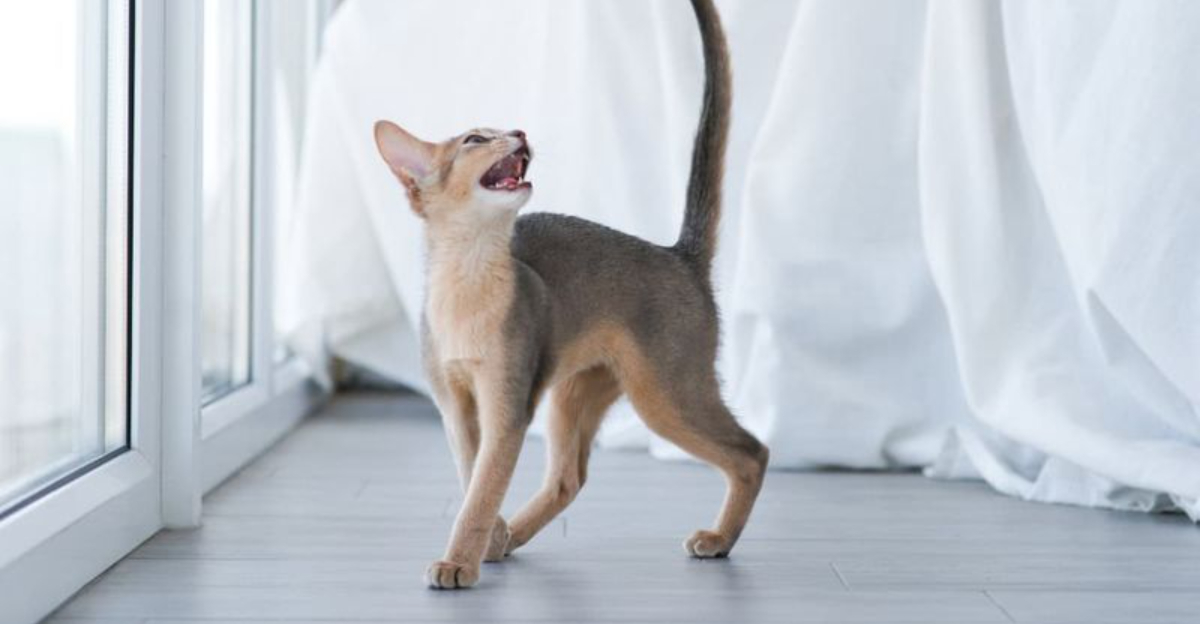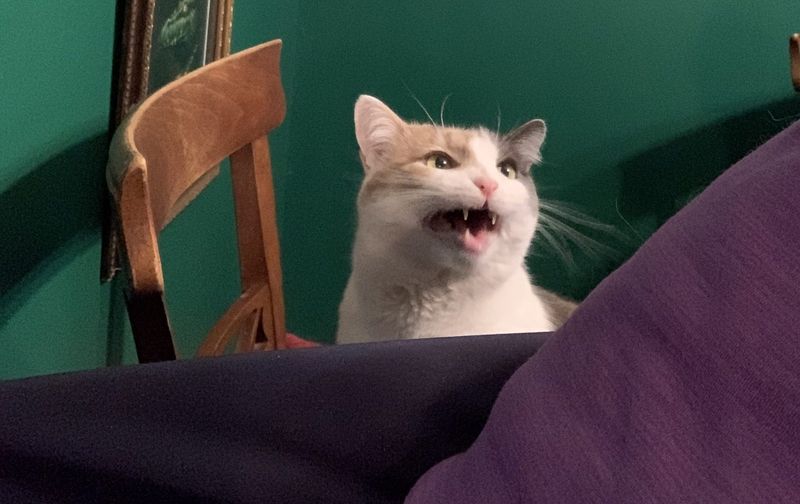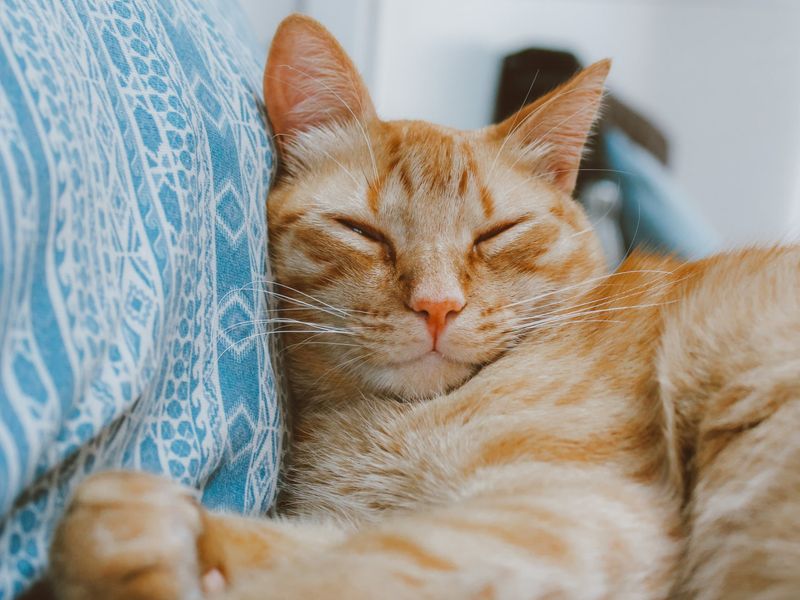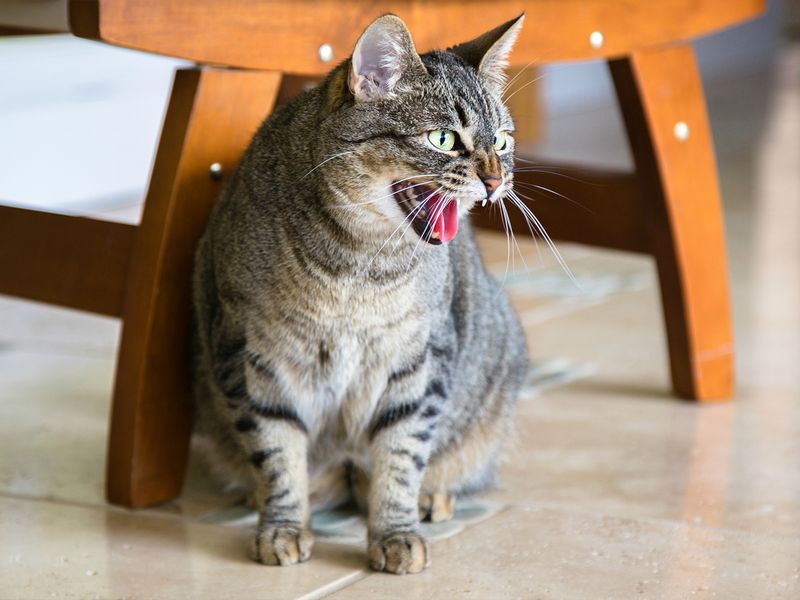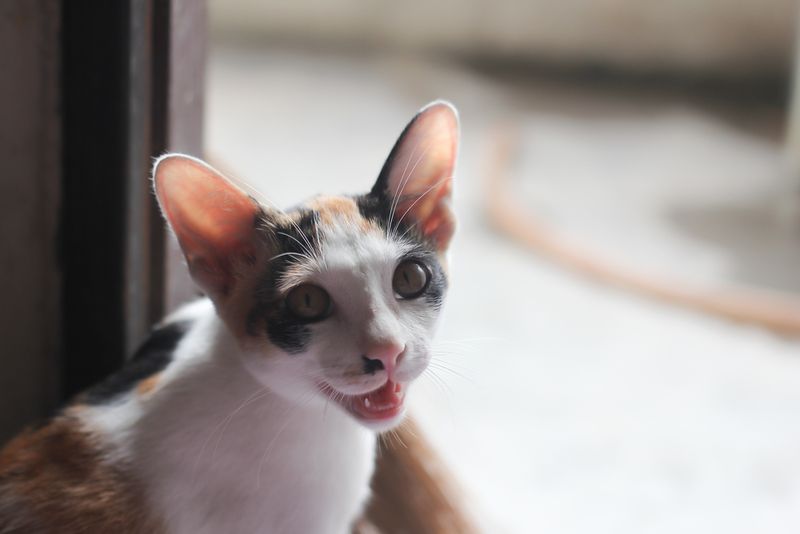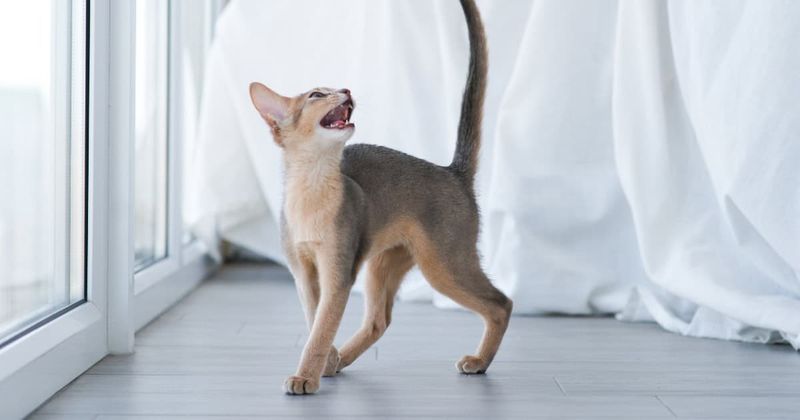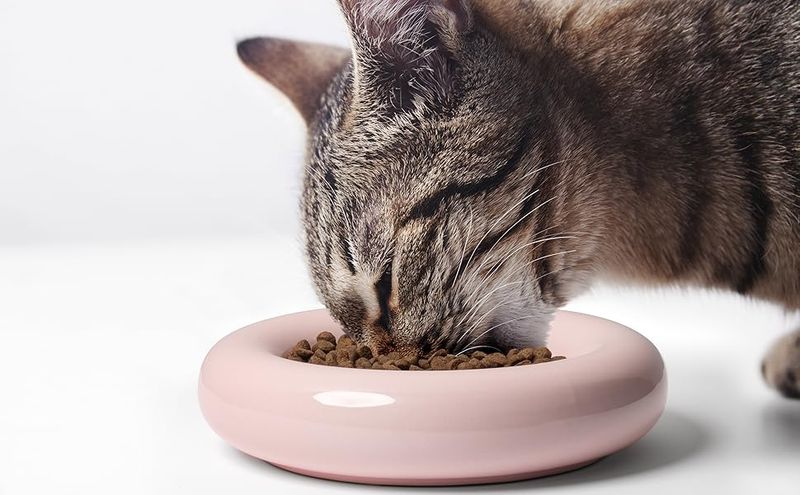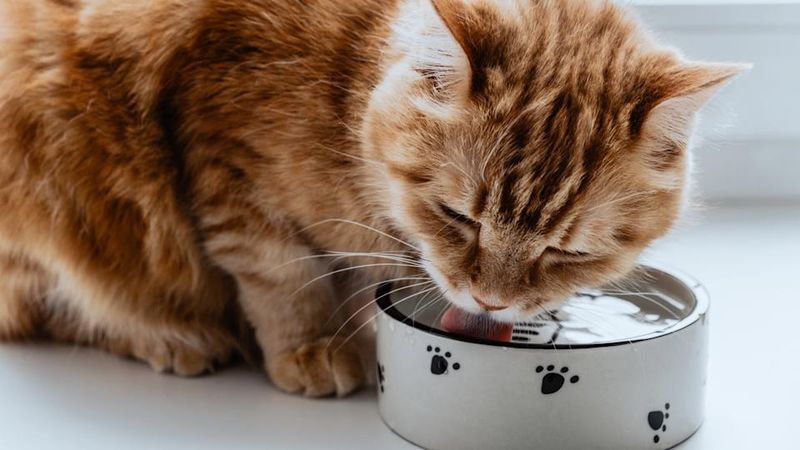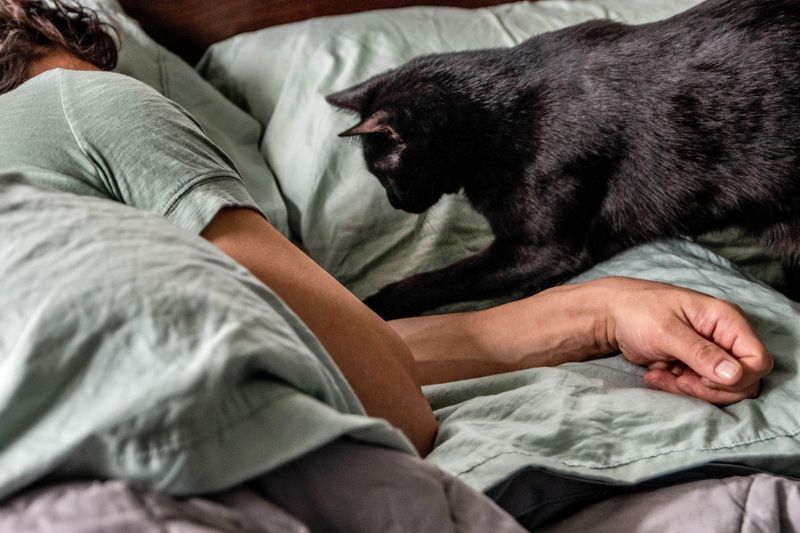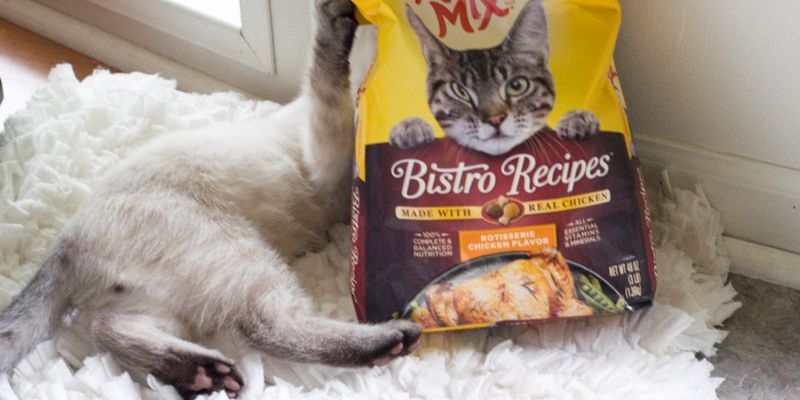📖 Table of Content:
Whether it’s a chirp from the windowsill or a midnight yowl that startles you awake, feline vocalizations are layered, expressive, and surprisingly nuanced. Every sound your cat makes is part of a vocabulary developed to interact with humans and, occasionally, other animals.
Most people assume that meowing is the only thing cats do to get attention, but the reality is far more complex. Feline communication includes a wide range of tones, patterns, and body language that can signal anything from affection to territorial warnings. Understanding these cues deepens the relationship between cat and owner, transforming basic interactions into meaningful exchanges.
Interestingly, while some sounds serve general communicative purposes, others are shameless pleas for food. Cats are master manipulators when it comes to getting a meal, and they’ll deploy an entire arsenal of specific meows and behaviors to make sure you don’t miss dinnertime. Recognizing the difference between social chatter and a demand for kibble is the first step to being fluent in “cat.”
1. Meow
A meow is the Swiss army knife of cat sounds—versatile, expressive, and highly personalized. Cats typically reserve this vocalization for humans, rather than their own kind, indicating that meowing evolved specifically for human-cat communication. One cat may meow softly and sparingly, while another belts out opera-level complaints at the slightest inconvenience. The tone, length, and volume can suggest a greeting, a protest, or a simple “notice me” request. Young kittens meow to call their mother, but as cats mature, they redirect this sound toward people. Owners often learn to distinguish between a “hello” meow and one that signals annoyance or urgency. Over time, your cat’s meows become a dialogue shaped by shared experience and routine.
2. Purring
Purring is one of the most comforting and mysterious sounds a cat can make. While it’s often associated with contentment—like when a cat is curled up in your lap—it also surfaces in less obvious contexts. Some cats purr when frightened, ill, or even in pain, leading researchers to believe it may have a healing or calming function. It’s not uncommon for cats to purr at the vet’s office or when recovering from injury. This rhythmic sound originates from a rapid twitching of the laryngeal muscles and can be felt as a soft vibration in their body. Many cats use purring as a tool for bonding, especially when lying close or making gentle eye contact. Whether joyful or anxious, the purr offers a glimpse into your cat’s emotional state.
3. Chirping/Chattering
Across the room, a cat staring out the window may start to chirp, producing a sound somewhere between a squeak and a click. This vocalization is often triggered by the sight of birds, squirrels, or other prey animals they can’t reach. It’s believed to be a mix of hunting instinct and frustration, as if the cat is mimicking the bite they can’t deliver. Some behaviorists theorize it could also be a way of practicing jaw movements for a future pounce. Chirping may seem random, but it’s deeply tied to predatory excitement and visual stimulation. Not all cats chirp, but those that do tend to repeat it when they see similar stimuli. This behavior provides a fascinating window into your cat’s inner hunter.
4. Hissing
Nothing signals “leave me alone” more clearly than a hiss. This sharp, snake-like sound usually comes from a place of fear, defense, or aggression. A cat may hiss when cornered, approached too quickly, or confronted by another animal. It’s not just the sound—hissing is often paired with arched backs, flattened ears, and fluffed tails to complete the intimidation display. This is a survival reflex, designed to make the cat seem larger and more dangerous than it actually is. Hissing is not a sound cats use lightly; when you hear it, the message is serious. Respecting this boundary is key to maintaining trust and avoiding scratches.
5. Trilling
A trill is a happy, melodic sound that sits somewhere between a meow and a purr. Most often, cats trill when they’re feeling sociable and want to say hello. It’s common for a cat to trill as they enter a room, particularly if they’re greeting a favored human. Some mother cats trill to call their kittens, which may explain why adult cats use it to get your attention affectionately. Unlike meows, trills are typically short and rising in pitch, creating a cheerful, singsong quality. Cats might trill while rubbing against your legs or as they jump onto furniture. This sound is one of the most delightful signs your cat enjoys your company.
1. Insistent Meowing
Few things are as unmistakable as a cat pacing around your feet, meowing nonstop. These persistent vocalizations, often louder and more demanding than usual, signal one clear intention: “Feed me now.” It often starts softly but escalates rapidly if you ignore it, creating a soundtrack of escalating urgency. Some cats incorporate specific body language, like rubbing against your legs or following you into the kitchen. Mealtime becomes a daily ritual, and cats quickly learn how to cue it using voice alone. This type of meowing usually occurs at the same time each day, linked to internal clocks and expectation. Ignoring it can sometimes cause your cat to get creative with their demands.
2. Yowling Near the Food Bowl
Even when the bowl is visible, a cat may sit beside it and emit long, drawn-out yowls that border on theatrical. These operatic sounds can seem exaggerated but are often meant to convey genuine impatience or hunger. This behavior can be especially dramatic if you’re late with a meal or if the cat believes they didn’t get enough. Some cats perform this routine as a form of training—training you, that is. Yowling may also come with pawing at the bowl, pacing, or even knocking things over. It’s a full-body performance, combining sound with theatrics for maximum impact. Responding too quickly can reinforce the habit, but ignoring it too long may lead to more persistent antics.
3. Pawing and Vocalizing
A cat that approaches and taps you with a paw, all while vocalizing, is clearly combining action with message. This sound is often shorter and more urgent, accompanied by direct eye contact or positioning themselves in your path. It’s not just a request—it’s a command cloaked in charm. Some cats even tap your face or keyboard, knowing you’ll have to respond. This interaction is usually reserved for trusted humans, showing both confidence and persistence. The meows themselves may be shorter and more rapid than normal. When paired with pawing, they leave little room for ambiguity: the food dish is calling.
4. Midnight Wake-Up Meows
At 3 AM, when the world is still, your cat might suddenly find their voice. These night-time vocalizations often come from a combination of boredom, hunger, or a disrupted sleep schedule. Some cats meow at closed bedroom doors, while others hop onto the bed and serenade you up close. The sound can be jarring—drawn out, loud, and filled with urgency. Night meows are not always about food, but for food-motivated cats, it’s a prime tactic to get an early breakfast. Keeping a consistent feeding schedule can help reduce this behavior. Otherwise, you may find yourself losing sleep to a very persuasive feline chorus.
5. Broken or Quirky Meows
Some cats invent their own vocal signature when it’s mealtime, producing chirpy, squeaky, or oddly pitched sounds they don’t use at any other time. These unique vocalizations are often tailored to what gets your attention best. They may sound funny or broken, as if the cat is trying out new syllables just for the occasion. Over time, these meows become part of a learned routine, signaling anticipation and impatience. You might notice that your cat uses this “food voice” only near the kitchen or the treat jar. These quirky meows are often endearing, but they serve a precise purpose: to differentiate a regular meow from a feed-me-now plea. In this way, your cat builds a custom language for one of their favorite activities—eating.
